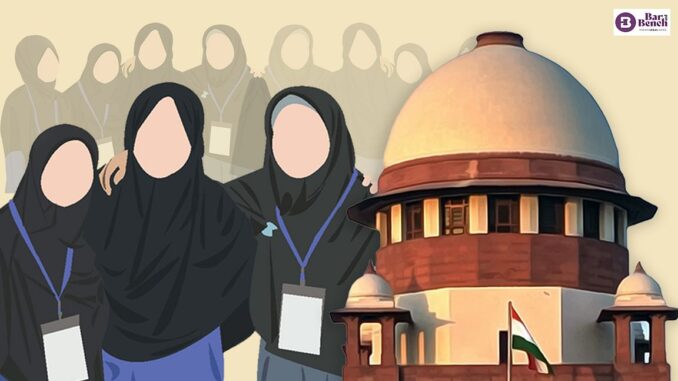
As an NRI who grew up in India and is working abroad, everybody here has the question on the Hijab controversy – Why are women in India not allowed to wear the Hijab in schools? In my childhood, I received an opportunity to be educated in a Hindu school with values. A number of my friends could not get to study in a Hindu school however. In other schools, they were not allowed to wear Vibhuti or Bindi on their forehead, and even Bangles and Necklaces were banned. Even flower garlands which are a part and parcel of cultural attire for South Indian girls were not allowed.
Moreover, from time to time, we see news in social media about similar occurrences. Recently, in a Christian school in Chennai, a girl was fined Rs. 500 because she had worn Mehendi to school. Some of my friends used to say, even if they applied Vibhuti and Kumkum before coming to school, they would have to remove them before entering the gate. And if they do not remove, they cannot enter the school either. This news neither appeared in any regional news media, nor in national news channels (forget about international news). Whereas, the controversy around Hijab became a major hit all over the world.
Those girls who are star campaigners for Hijab, many of them have very different photos in social media. On the one side, they highlight Hijab, Koran and their birthright, while on the other side, they live a completely different lifestyle as evidenced by the profile and pictures available in social media. Who is responsible for, and who is behind the Hijab controversy, now becomes a big question?
Sometimes, as an outsider, I look at, is Hijab really a concern for India and Indian Muslims, or is it just election driven propaganda. And moreover, even though the honorable High court has given an interim stay order that Hijab cannot be used in schools, the court also said that they will look into the Koran. Whereas in the same honorable court, when Sabarimala controversy happened, on whether women are allowed within the Sabarimala temple, they gave the verdict in keeping with the constitution. They never looked at the Hindu religious scriptures. Again, a question arises, who is responsible here? Moreover, and ironically, Hinduism highlights give and take policy. In fact, Hindus give more, and receive less. Our Vedic
culture highlights that one must be a contributor. That is why we did not have so called charity, but the concept of Danam instead. The amount of Danam varies from time to time, but a minimum of 20% and above, Hindus used to contribute for others.
However, ironically, there are religions where all followers, who without any dispute give 10% for religious purposes. But we Hindus are more self-centered, and more interested in “me and my family”, which includes “only me”. Many affluent families study in the best schools and want to settle overseas. In that process, they don’t contribute or do anything. However, had Hindus started their own universities and colleges, for Hindu students, embracing Hindu cultural practices, would these problems have happened in the first place?
Guest Editor: Gautham Kumar